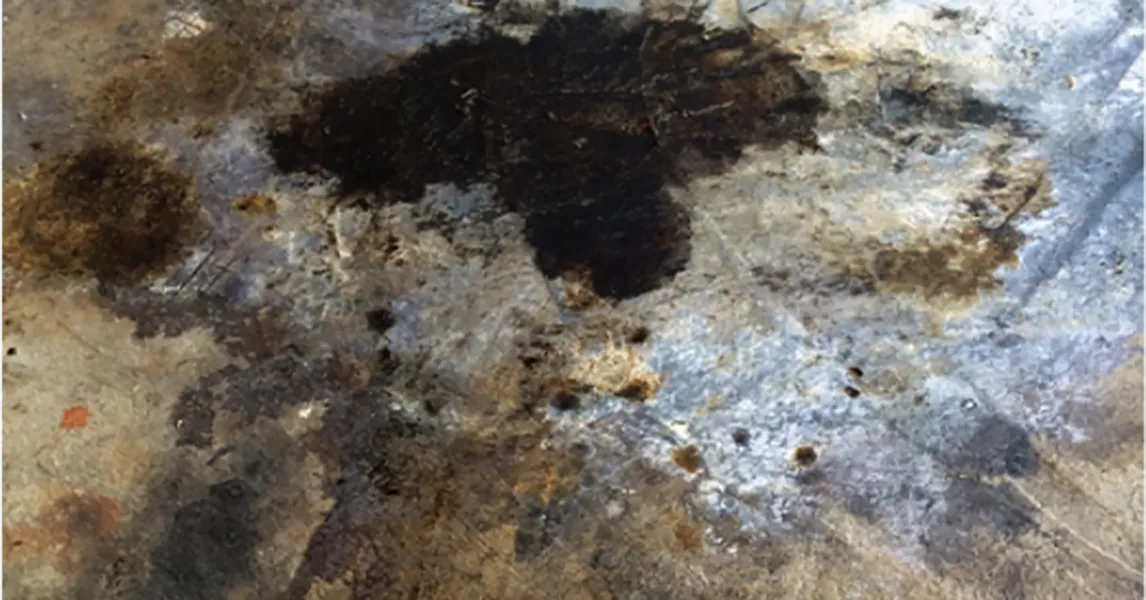If you've decided on getting a garage floor coating, STRONGHOLD FLOORS recommends considering the following three items before selecting the coating system:
- Current Floor Condition
- Required Performance
- Desired Look
In this first article (part of a four part series on selecting a coating system), we'll discuss how to evaluate the current condition of your garage floor.
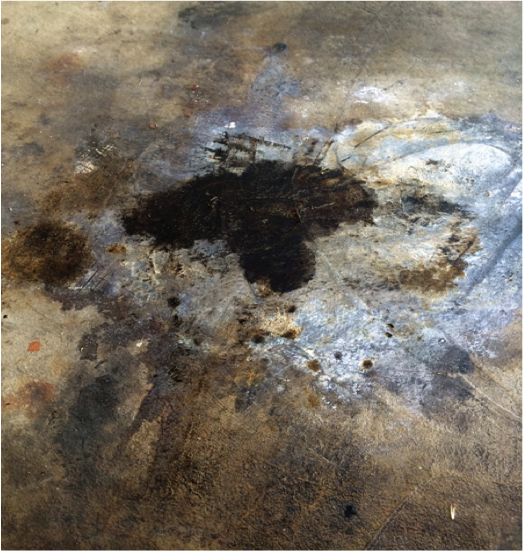
The condition of your concrete floor plays a role when selecting a floor coating system.
STEP ONE: Determine Your Current Garage Floor Surface Condition
What is the current state of my garage floor?
Even though we pass through our garage daily, we usually don’t pay much attention to the condition of our garage’s concrete floor. After all, we often pull into the garage and head straight inside, not looking under the vehicles to see the mess.
Taking a detailed look will identify the current condition of the concrete surface, such as the amount of staining, cracking, dusting, surface wear, or pitting.
Why does it matter?
Before a proper garage floor coating can be considered, the condition of the existing concrete will determine the surface repair and floor preparation required, along with the proper type of coating system.
Surface conditions can exist for a number of reasons, such as concrete mix design, types of installed joints, and amount of stone base under the slab.
Some conditions are introduced by contractors or homeowners, such as sealers, chemical spills, and snow melting agents.
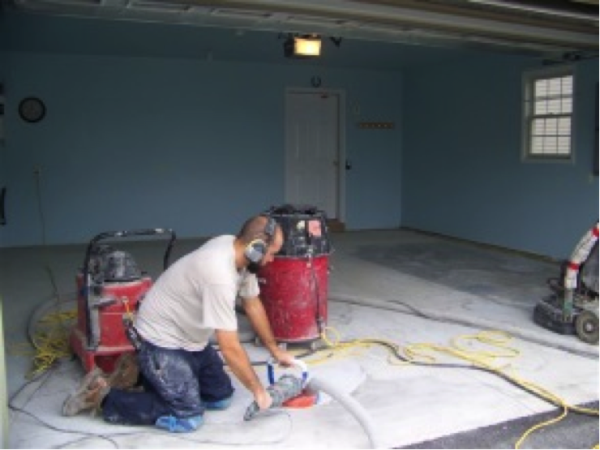
STRONGHOLD FLOORS grinds the concrete floor to reach the surface profile necessary for our epoxy to bond with the concrete.
What should I consider?
When evaluating the condition of your concrete, you should ask and consider the answers to the following questions:
What is required to properly repair any issues or surface conditions?
Coatings must have a structurally sound surface to bond to. If the garage floor has a lot of damage, large cracks, or pitting, these issues must be filled with repair materials that:
- Have compressive strength equaling or exceeding the concrete.
- Have a bond strength equaling or exceeding the concrete.
- Be constructed of a material that allows proper adhesion by epoxies or other polymers.
Unfortunately, most repair materials available at big box and hardware stores will not suffice. Better repair materials are available online. When in doubt, leave it to the professional coatings company.
What caused the surface issues to begin with and are those issues likely to happen again?
Most pitting is caused by chemical attack (ex: road salts and acidic cleaners) or overly aggressive cleaning with pressure sprayers.
A professional grade coating will hold up to most chemical attacks and doesn't require cleaning with pressure sprayers. In fact, most messes can be cleaned with water and paper towels. Read 12 Tips for Use & Care of Your Epoxy Floor Coatings for ways to keep your floor coating in great shape.
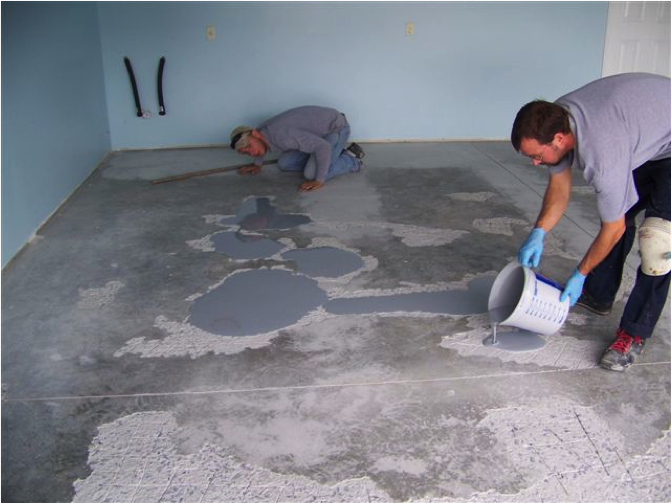
Before we can apply our epoxy base coat, we must first prepare the concrete surface.
Are there hazards involved with the continued use or with correcting issues in the existing concrete floor?
Some older garages may have applied paint kits that contained lead (prior to 1979), have asbestos tiles (typically 9”x9” in size), or have cracks that create trip hazards.
Before applying any coatings or other type of garage floor coverings, lead or asbestos should be removed by a properly certified company. All heaved cracking or spalling should be fixed to remove any trip hazards in the surface.
The following table gives a brief overview of how the condition of the concrete floor will affect our approach.
|
Concrete Condition |
Impact |
|
Slick surface that won't absorb water |
Concrete that won't absorb water is either tightly troweled or sealed; either state requires the surface to be prepared by mechanical diamond grinding or shot-blasting. The pores of the concrete must be open and a proper surface profile created to allow the coatings to bond correctly. |
|
Wide open and jagged cracks |
Cracks should be cleaned out and filled with the appropriate repair materials. The surface should be repaired to a state which allows the coatings to be bonded in a seamless fashion. |
|
Uneven or heaved cracks |
A combination of surface grinding and repairs. |
|
Lots of pitting/very rough surface |
The concrete original "cream" layer or wear surface is degraded and the surface wear will increase in shorter periods of time. Typically requires soak-in primers or skim-coats of low viscosity materials to help fortify the remaining concrete. |
|
Covered in old paints or epoxy |
All old materials should be removed prior to applications of new protective materials. Mechanical diamond grinding (the method STRONGHOLD FLOORS uses) with special concrete dust vacuums can remove and dispose of the old paints and epoxies. |
|
Covered with oil stains and spills |
Oils and other contaminants clog the pores of the concrete and cause premature failure of products applied to the surface. Degreasers or mechanical abrasion methods must be used to remove the contaminants before protective products can be applied. |
Step One Conclusions
The condition of the floor often assists a homeowner with determining if a "Do It Yourself" epoxy kit or garage floor paint is something they even wish to consider.
A good, professional coatings company can deal with any of the surface conditions listed above as part of their installation process. Without properly dealing with the surface conditions, any new floor coating and many floor coverings will have issues.
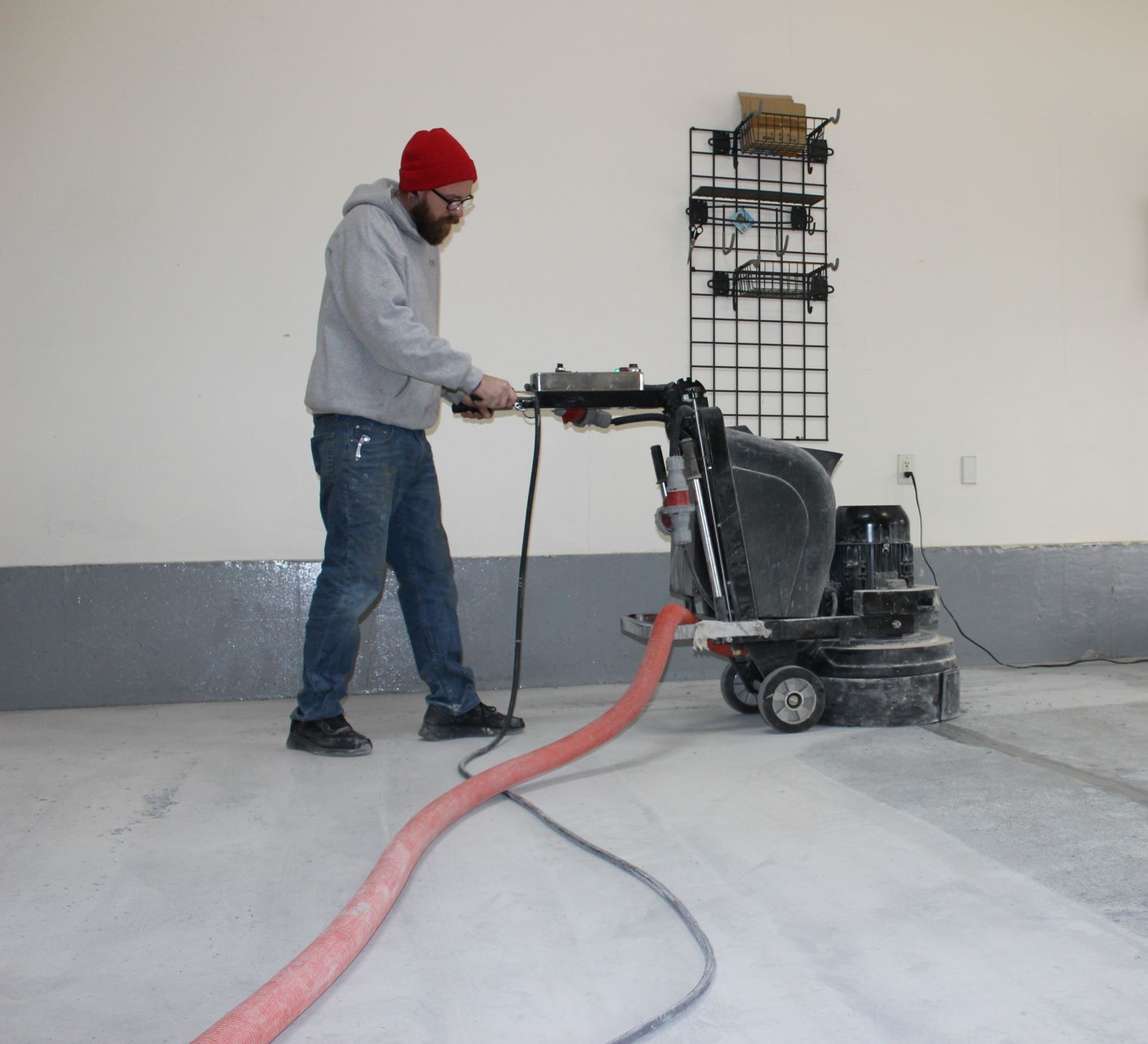
Diamond grinding the concrete surface of a garage in Dillsburg, PA.
The Next Step
This is the first of four articles dealing with garage floor coatings and their selection criteria. Continue reading the series with Part II: Determining the Performance Requirements.
The team at STRONGHOLD FLOORS has conducted over 6000 home visits to assist homeowners with selecting a garage floor solution. Chances are, we have seen it and dealt with it. Our crews have extensive experience in surface and crack repair, as well as alleviating surface contaminants.



